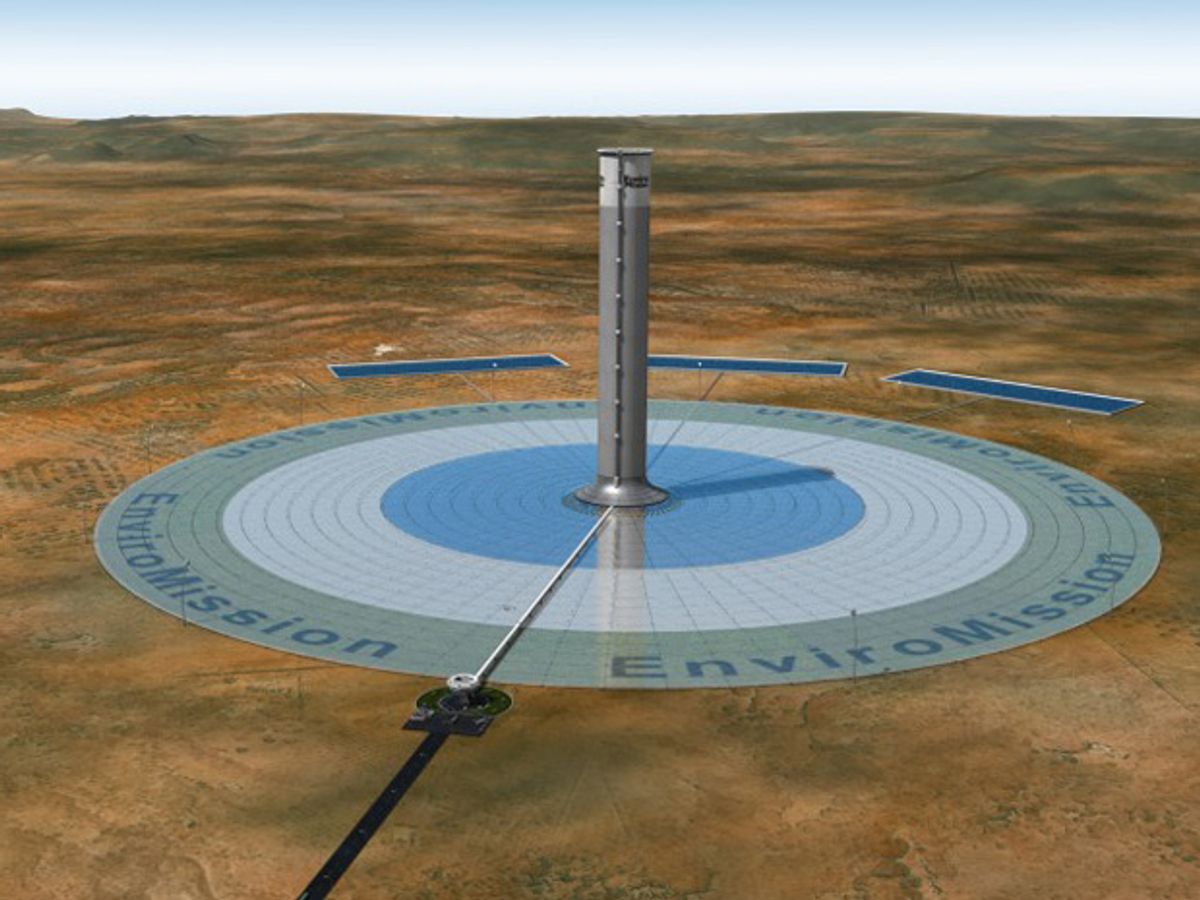For about seven years, a 195-meter-tall (640-foot) chimney rose above the plain in Manzanares, Spain, south of Madrid. The solar updraft tower, which had turbines at its base, rose from the middle of a 46 000-square-meter greenhouse-like collection area; it generated up to 50 kilowatts of power—that is, until it fell over.
The unfortunate end to the solar chimney is little more than a footnote. It failed due to supporting wires that weren't designed to resist corrosion, a fate that serves to punctuate the persistent failures of a technology touted for the last 110 years. The technology, first proposed in 1903, works by concentrating solar energy under a canopy near the ground, like a greenhouse. The resulting hot air is pulled upward into the tower, because hot air rises. Turbines at the base of the tower spin as the air rushes past, generating power. The taller the tower, the faster the updraft, and the more electricity one can produce.
Only a couple of examples of solar updraft towers have been built, including the Manzanares tower and one that is currently functioning in Jinshawan, China. In general, building towers tall enough to generate a lot of power was deemed risky and expensive. Now, as one company plans to build a truly massive tower in the Arizona desert, a dreamer famous for crossing the Pacific with Richard Branson wants to build a very different type of tower using his medium of choice: balloons.
Per Lindstrand, who has set a number of ballooning records with Branson, told UK magazine The Engineer that he was approached by the ALMA Observatory in Chile's Atacama Desert about devising a solution to the power needs of the remote site. The fine dust in the region makes solar panels a rough sell, so they have worked up plans for an inflatable updraft tower rather than a solid one.
The design is ambitious: a 130-megawatt-capacity unit comprising a one-kilometer-high tower skirted by a 14-kilometer-diameter canopy at its base. An engineer with Lindstrand's company said materials selection for the tower is still an open question. With a capacity factor of almost 25 percent, the tower would beat out solar panels and approximate wind power generation (updraft towers really need heat rather than actual sunlight, so they function even when it is cloudy). And perhaps most importantly, the balloon idea would cut the costs associated with building what would actually be the tallest manmade structure in the world if completed to design. Lindstrand said using concrete to build such a chimney would cost $750 million, while an inflatable tower could cost only $20 million. That seems a tad ambitious given mega-projects' costs in general, but it clearly would diminish materials costs to a great extent.
And speaking of ambitious, Australian company EnviroMission has even grander plans. The developer wants to build a 200-megawatt tower in Arizona involving 32 large (6.25-megawatt) turbines around the base. The company also has agreements in Texas for other tower projects; a concept design in Australia calls for a 1000-meter tower, though the Arizona project would likely be bigger.
Just because an idea hasn't worked before doesn't mean the concept isn't worth revisiting. But we won't anticipate the prospect of solar towers dotting the landscape until one manages to stay standing for a little while.
Dave Levitan is the science writer for FactCheck.org, where he investigates the false and misleading claims about science that U.S. politicians occasionally make.



